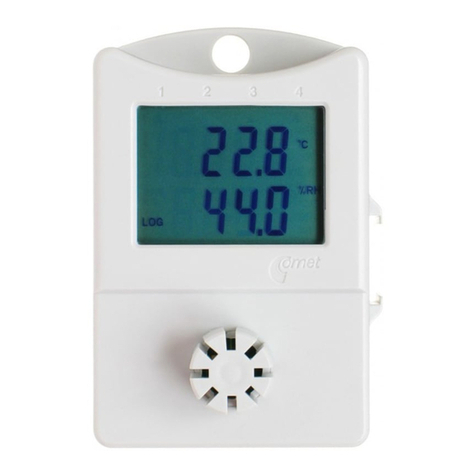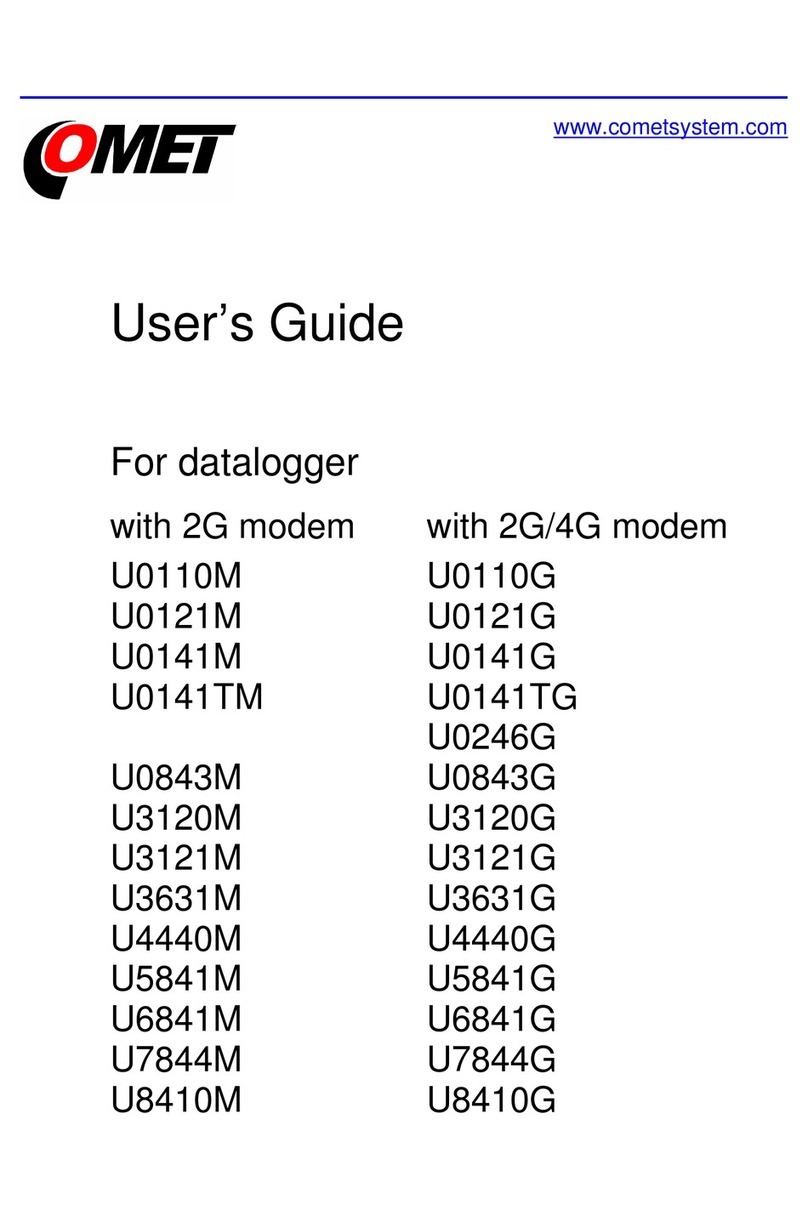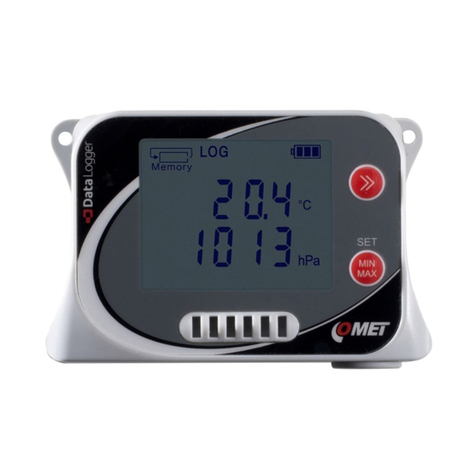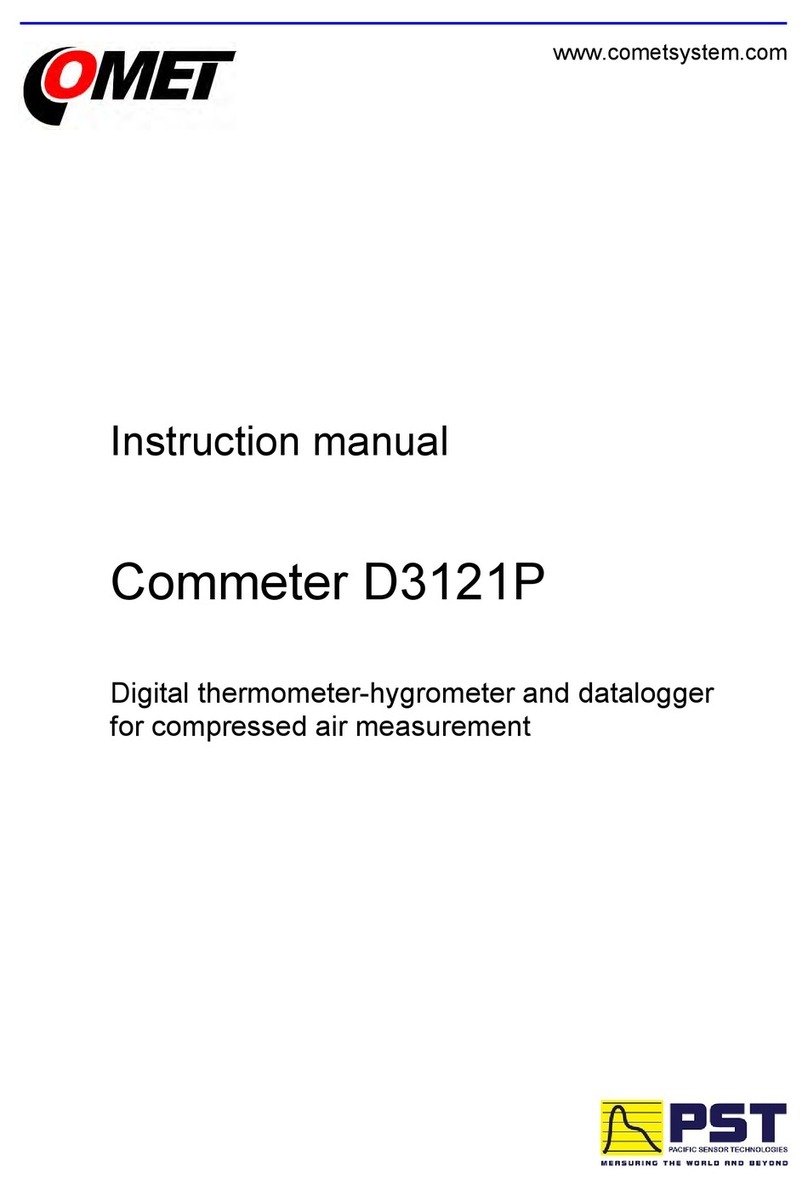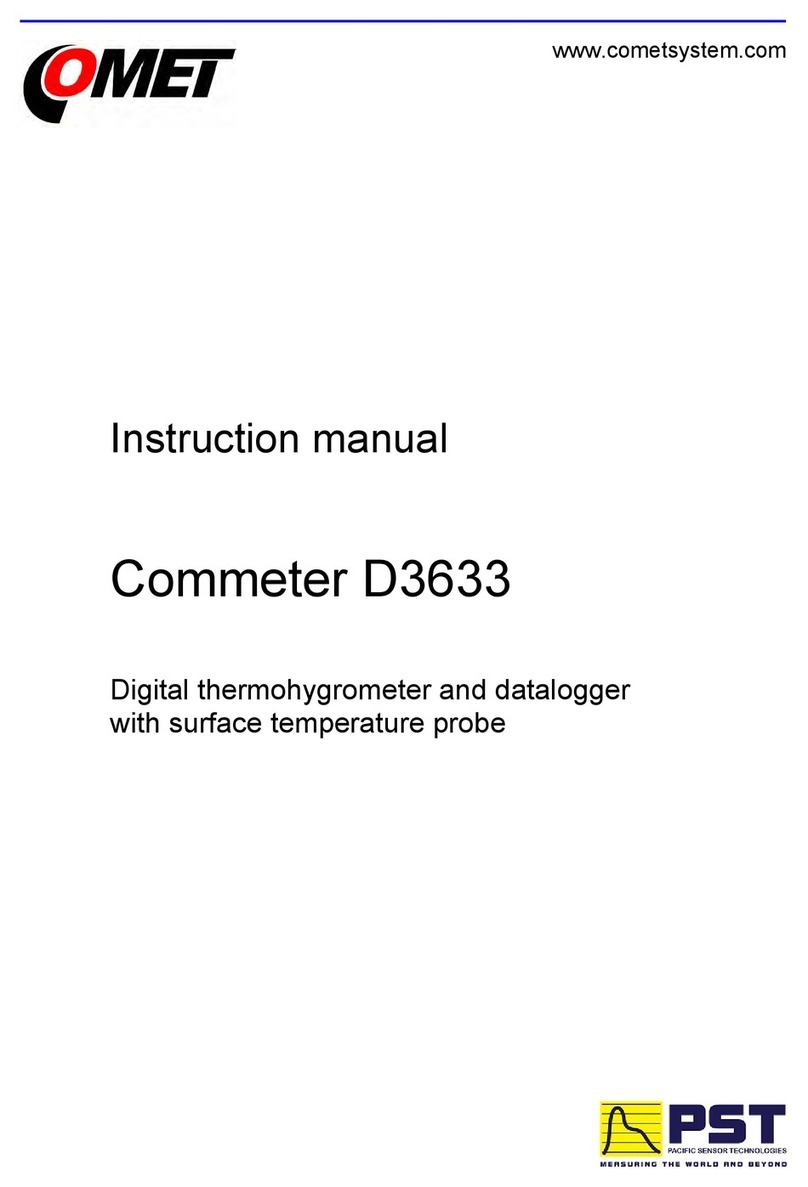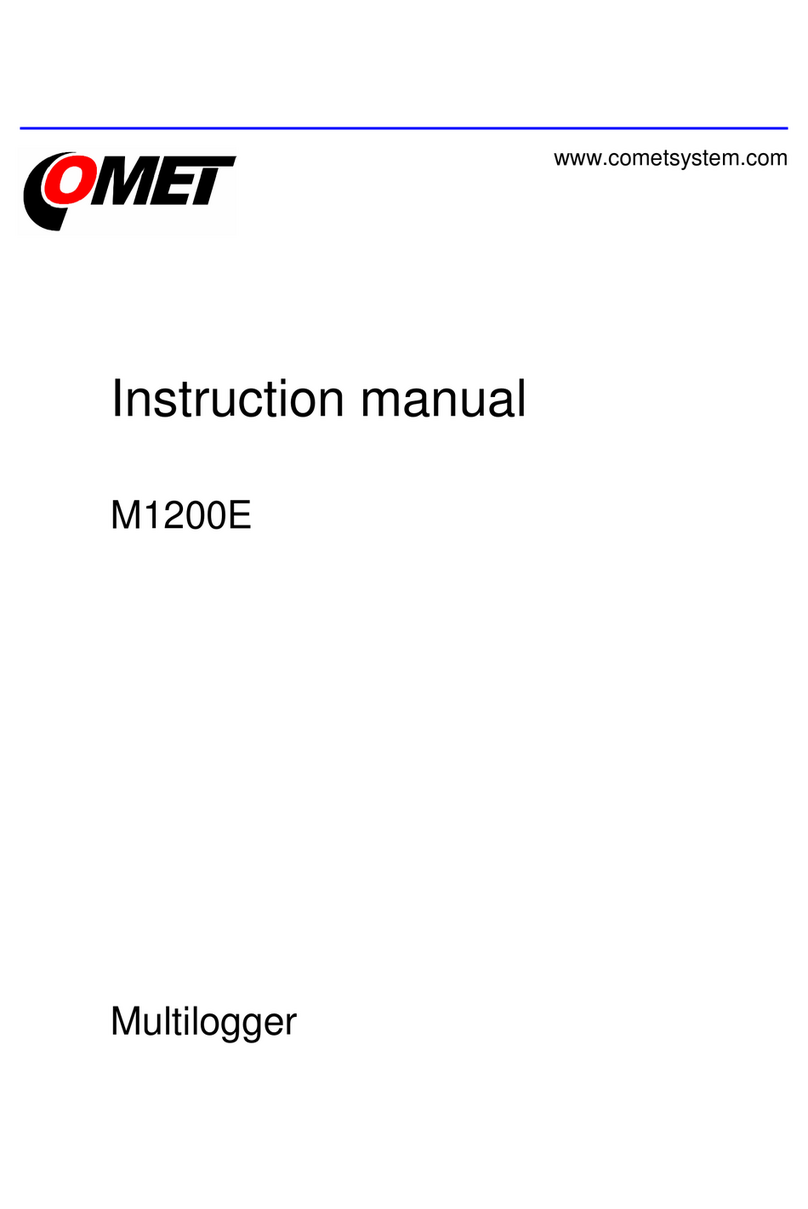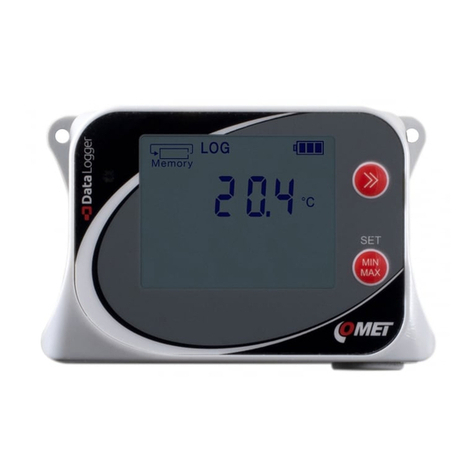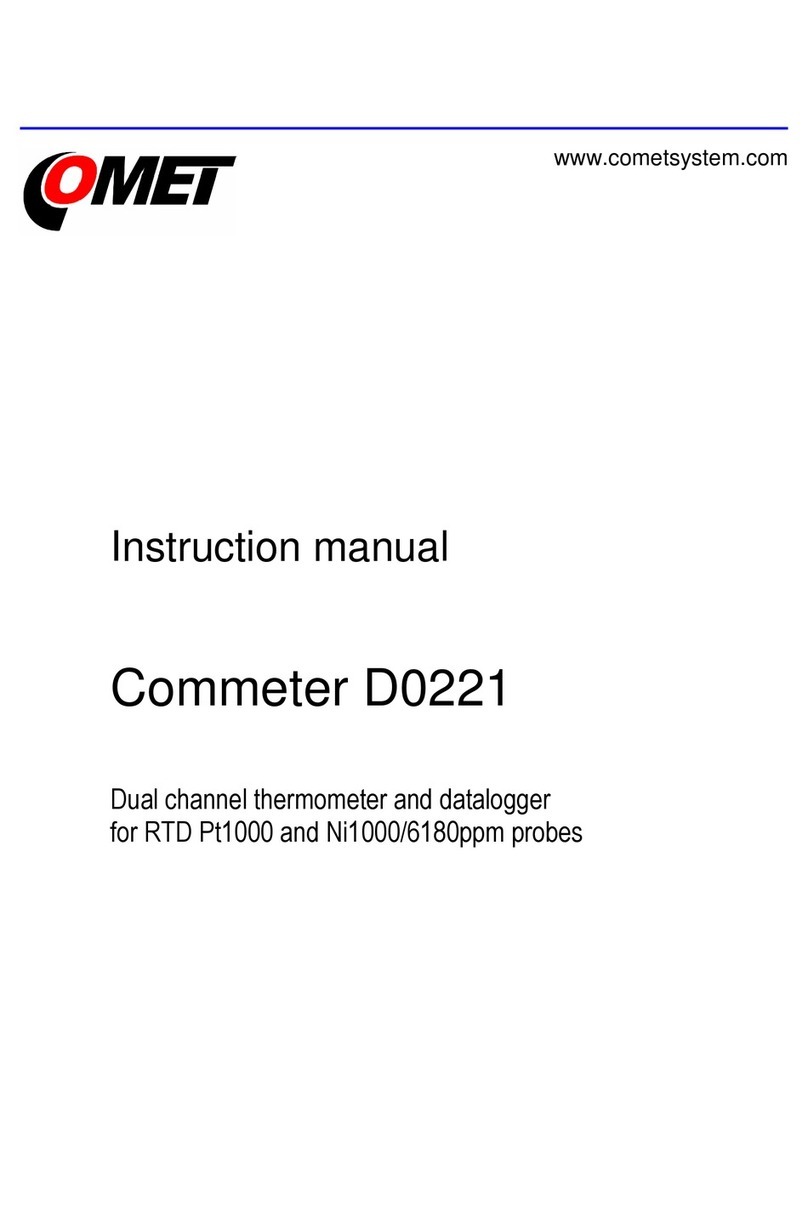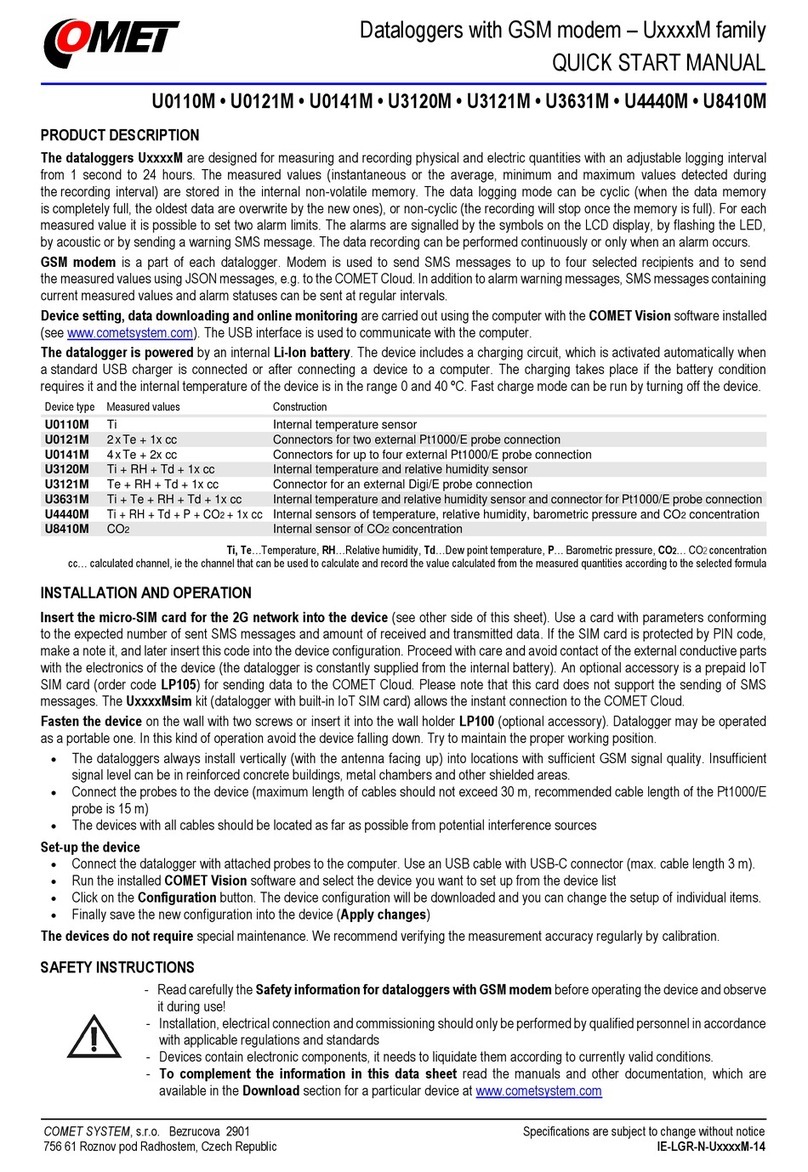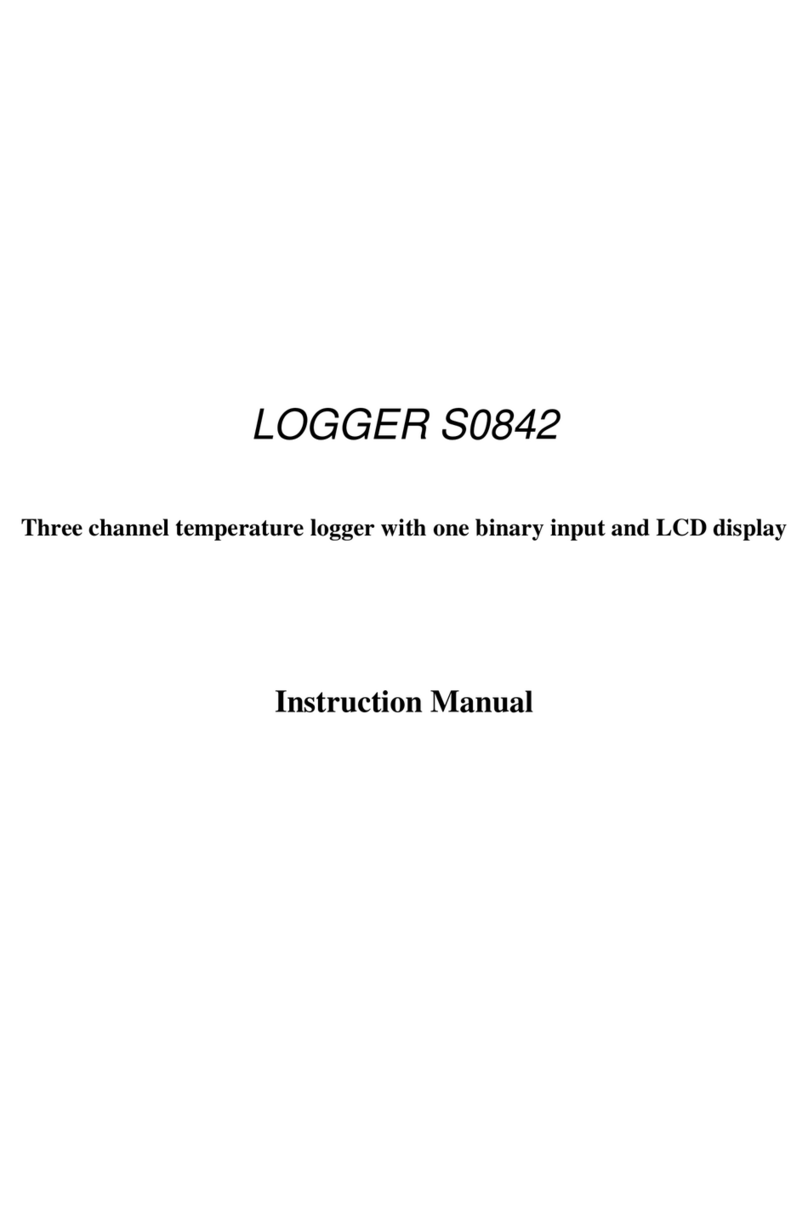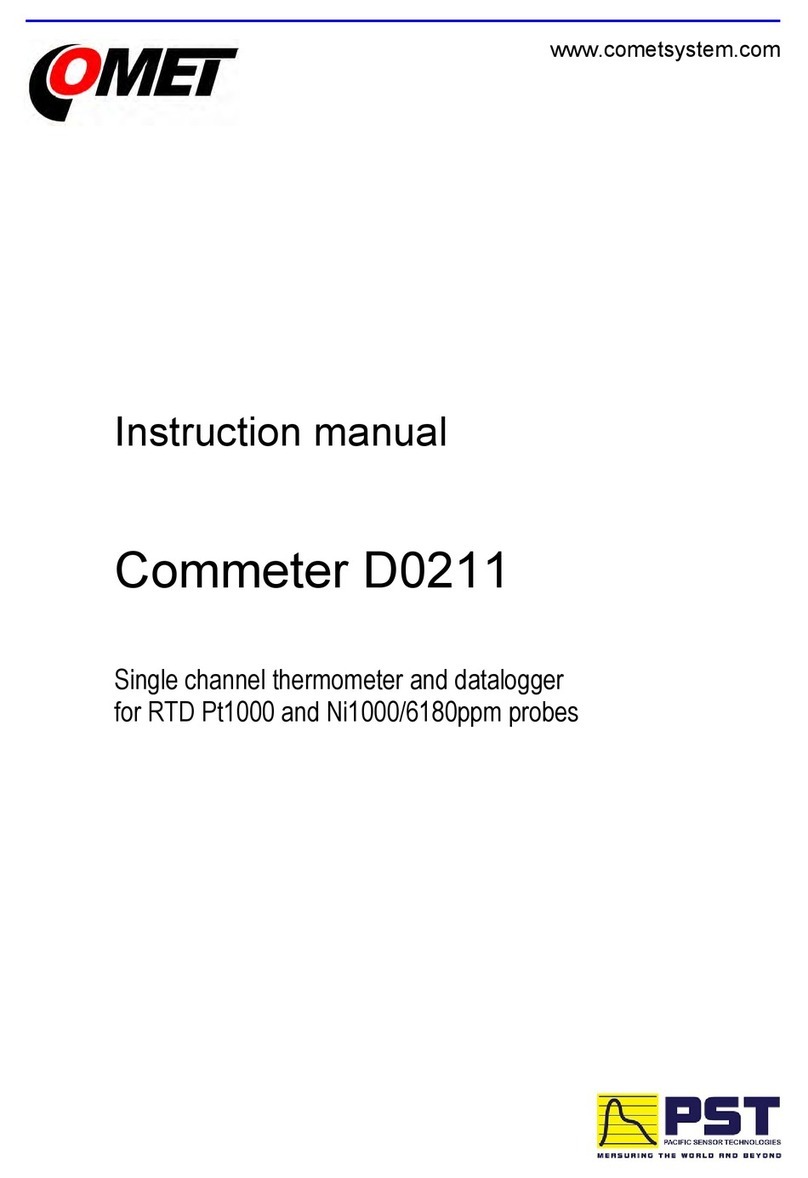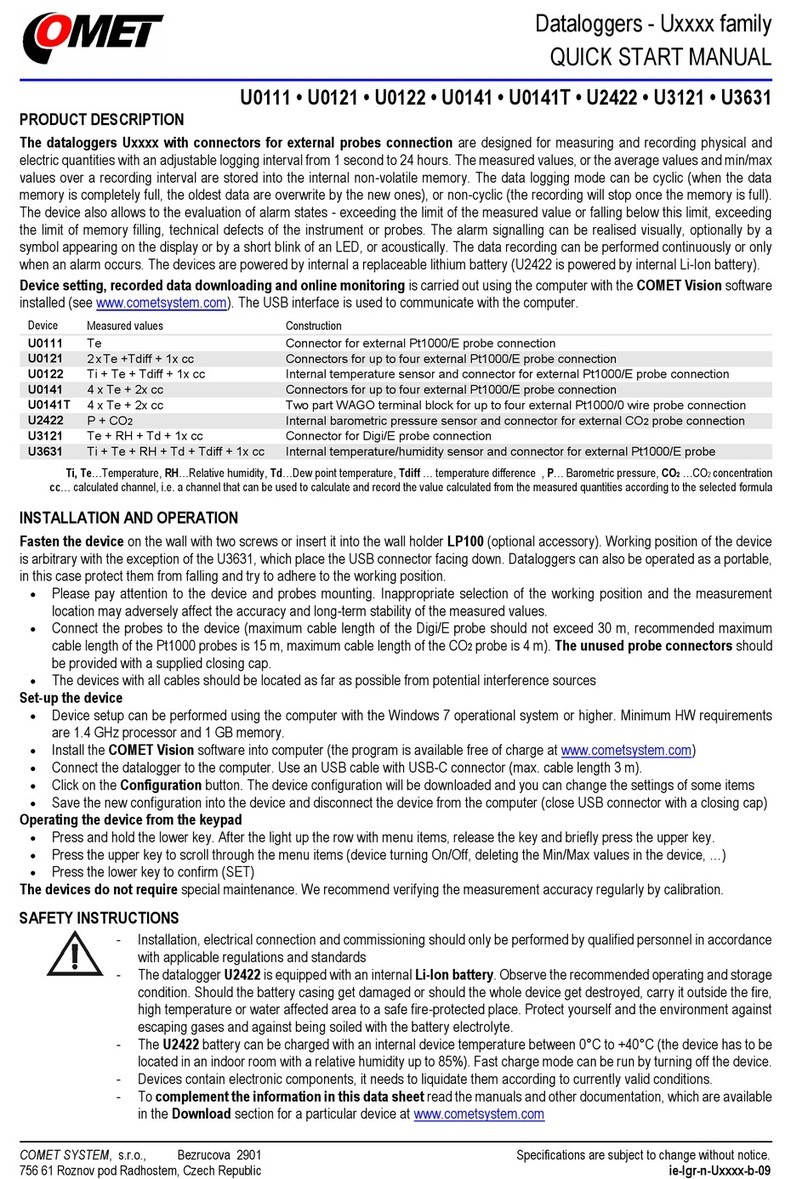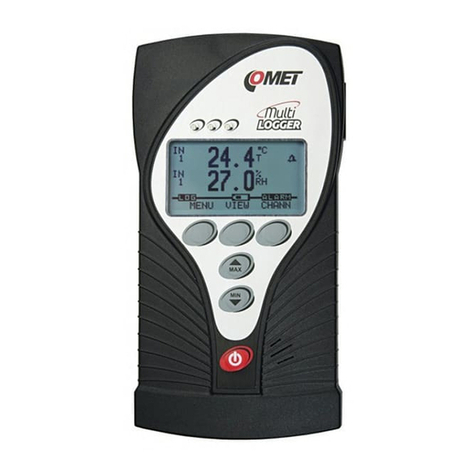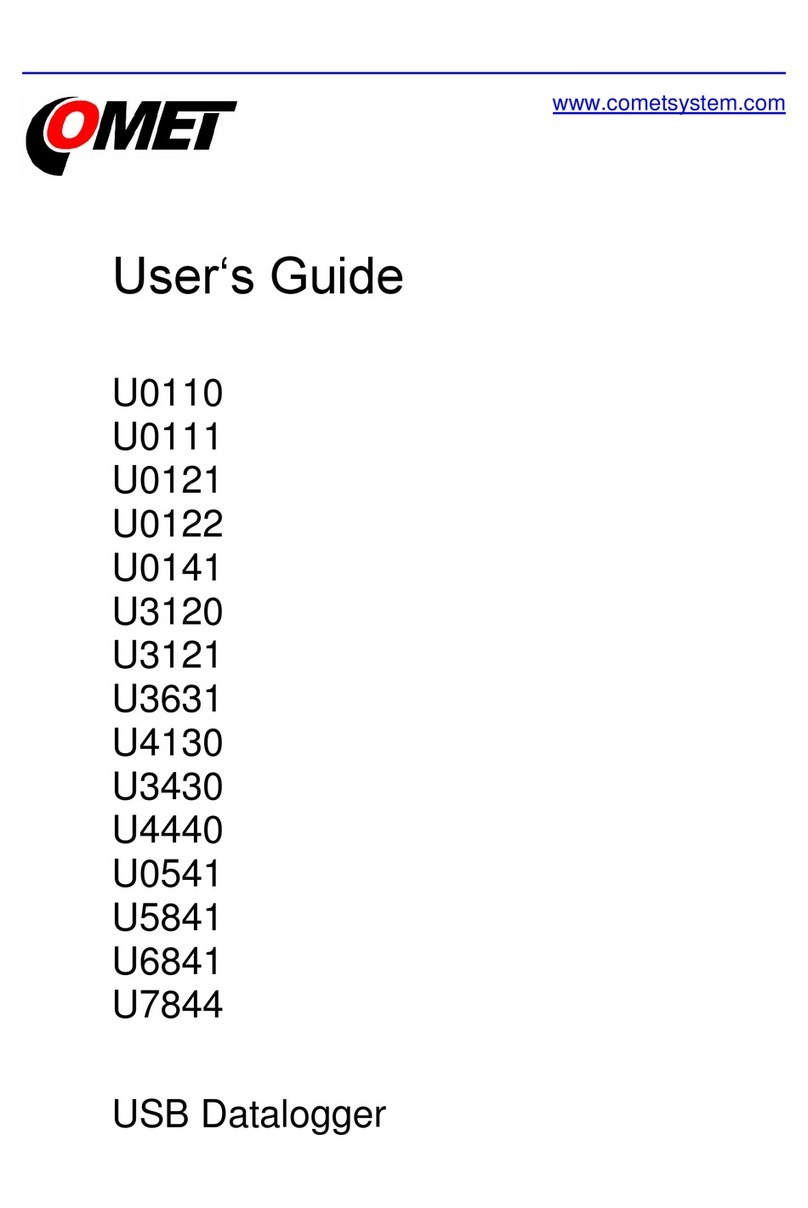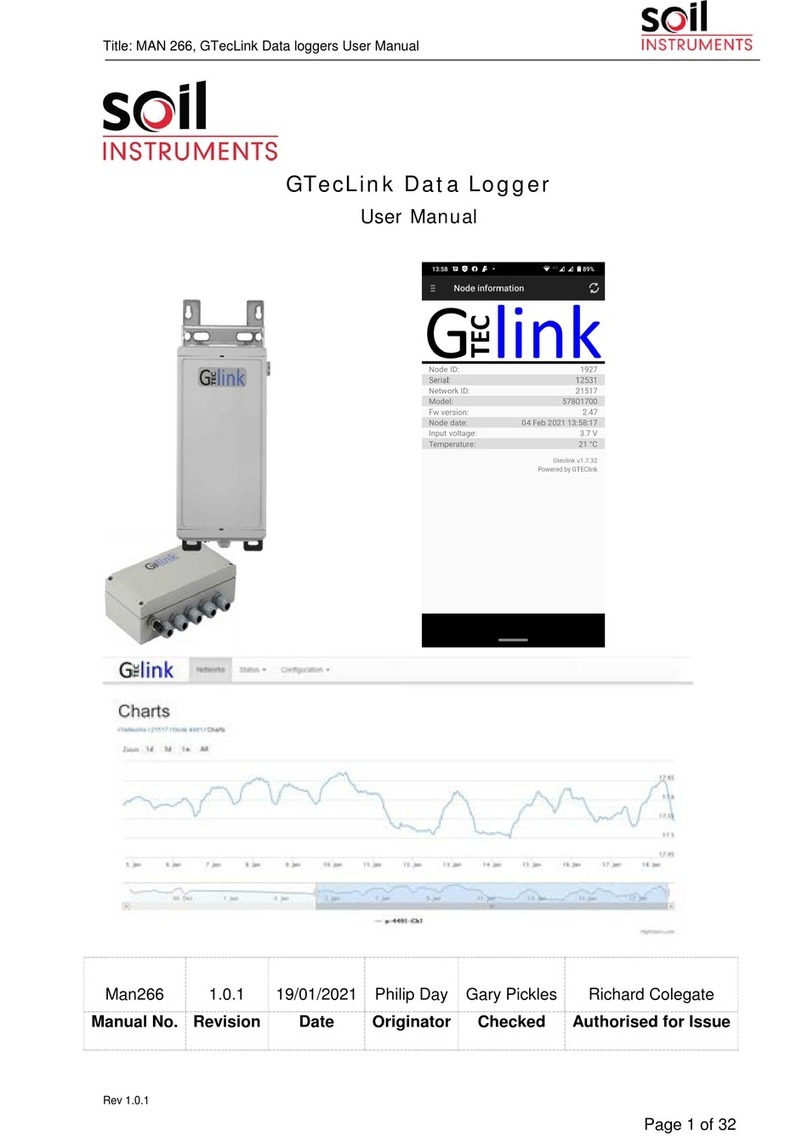4IE-LGR-UxxxxM-23
Introduction
This datalogger is designed for autonomous measurements and recording
of physical and electrical data, with the data recording interval from 1 s to 24 h.
The inputs and ranges of measured quantities are determined by the model
type the user has bought. The user cannot modify them. This portable device
can be mounted in a fixed-position. To set up datalogger, a PC with a USB
interface is needed.
This device allows:
- to measure and process input data coming from internal or external sensors,
binary inputs, counters, or current inputs,
- to detect and log minimum and maximum values (existing since their last
manual resetting) of each quantity,
- to display the measured values on an LCD display. Some features can be
controlled by two push buttons situated next to the display (device switching
off and on, deactivation of alarm signalling, Min/Max value resetting),
- to store an autonomous chronological record of measured values in internal
non-volatile memory. The values to be collected can be measured at the instant
of recording or as average or min/max values detected during the recording
interval. Recording can be performed continuously or at the alarm time only.
The recording mode can be also set optionally as non-cyclic to stop at the
memory filling up, or as cyclic. In this mode the originally recorded values will
be overwritten by fresh ones after the memory unit getting filled up.
- via the mobile operator's network, send SMS messages to up to four selected
recipients and JSON data messages to the COMET Cloud Internet storage
(optionally to your own storage). UxxxxM series dataloggers contain a 2G
(GSM) modem, UxxxxG series dataloggers contain a combined 2G/4G (GSM
and LTE) modem.
- to set up two alarm signalling limits for each quantity to be measured. The alarm
signalling can be realised visually, optionally by a symbol appearing on the
display or by a short blink of an LED, or acoustically. When the alarm status
changes, alarm SMS messages and/or JSON data messages can be sent to
the Internet storage.
- send the measured values via a data connection to the Internet storage at
an adjustable interval using JSON messages (more specification of format is
available on request from the manufacturer)
- to send, at a configurable interval, informative SMS messages containing
device identification, currently measured values, and alarm states to up to four
selected receivers. These messages may be of two kinds: user readable
(suitable to be displayed on a mobile phone), or machine readable (suitable
for automated data processing in a database or a cloud).
- autonomous power supply from the internal Li-Ion battery, its charging
is possible using a standard USB charger. The internal radio modem
is connected to the power supply only when there is a request to send data to
the Cloud or send an SMS, otherwise it is switched off to save energy.
- to communicate with a computer by means of a USB interface (all device
settings, recorded data downloading, and online monitoring). To communicate,
the datalogger utilises the HID USB standard, which does not require
additional controllers to be built into the PC.
